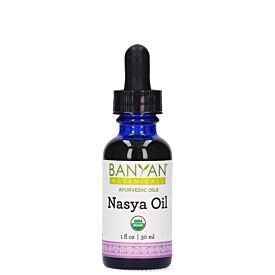Sinus Treatment in Ayurveda
/Sinus Treatment in Ayurveda
The nose is considered the doorway to the brain, according to Ayurveda, so cleansing and caring for the nose and sinuses, increases the flow of prana and increases energy to the head and brain. This has a direct, positive effect on the functioning of the brain and therefore, the mind. In Ayurveda, the sinuses are associated with Kapha dosha. Kapha predominant people have a proclivity towards problems with the sinuses. However, all dosha can experience issues with the sinuses. During the spring and winter months, sinus congestion is experienced more often. It is important to give extra care to the sinuses during these seasons.
Types of Sinus Treatment in Ayurveda
There are a variety of sinus treatments in Ayurveda that range from gentle practices that are a part of dinacharya, or the Ayurvedic daily routine to more intensive practices that an Ayurvedic professional would employ in a clinical setting. The more intensive practices include nasya treatments that are used as part of panchakarma, the Ayurvedic detoxification program.
Clinical Nasya
Nasya is sometimes referred to as shirovirechana, shiro meaning “head” and virechana meaning “purgation,” so shiroveirechana is a nasal or head purgation that detoxifies and rejuvenates the tissues of the head, face and neck. These nasya treatments remove ama or toxins from the nose, larynx, pharynx, mouth, sinuses, ears and eyes. There are three types of clinical nasya treatments:
shodhana nasya: promotes secretions to remove toxins and detoxify
shamana nasya: creates a palliative or soothing effect
bruhan nasya: provides nourishment to the tissues of the face, head, neck and sinuses
Nasya treatments can be administered using herbal oils, “squeezing” herbal juices into the nasal passages or blowing powdered herbs into the nose. These methods are employed only by a trained Ayurvedic professional and should not be practiced at home.
Self-Administered Nasya
A gentle nasya practice is part of the dinacharya, Ayurvedic daily routine. Nasya is counter-indicated when there is acute nasal congestion, infection or headache. It should not be practiced by pregnant women. To practice nasya, put a drop of nasya oil on your index finger and put in each nostril. Inhale as you place the oiled finger in your nostril. (wait at least 15 minutes after Jala Neti to perform Naysa). As part of a deeper, weekly practice, warm the dropper bottle of nasya oil. Hang your head over the edge of a bed and place ½-1 dropper of oil into the nostril while holding your breath. Inhale the oil and swallow as needed. Repeat on the other side. Remain with your head in the inverted position for 2-5 minutes to allow the oil to penetrate more deeply. You may need to gently blow your nose once you sit or stand up.
Jala Neti
Jala Neti is the practice of cleaning the nasal passages with warm, saline solution. Jala Neti keeps the nose and sinus system clean and clear. Physically, it helps prevent bacteria and viruses from staying in the sinuses. It keep the sinus system cleared of any mucus and allows freer breathing. It is said to prevent colds, flu, sinus infection, sinus headaches, post nasal drip, ear infections and allergies. Your sense of smell and vision may improve. Mentally, it clears the mind and allows for more focus and concentration. Spiritually, it enhances the intake of Prana at the pranic intake center located behind the area between the eyebrows (ajna chakra).
To practice Jala Neti, clean each nostril and sinus cavity with 4 oz. boiled water mixed with 1-2 pinches neti salt. Swirl it around to dissolve the salt. Wait for the water to cool to a baby bottle temperature. Place the neti pot spout to the right nostril. Relax your jaw. Bend at the waist until the upper body is just less than horizontal. Turn your head to the opposite direction of the neti pot to allow the water to flow gently through one nostril and out the other. Carefully reverse instructions until you are upright. Gently blow the nose and repeat on the left side.
At first there might be some discomfort. Most common discomforts:
The water doesn’t flow through: try slightly varying the angle forward and the angle sideways, it will eventually flow
The water seems to sting: try a little more salt, you are trying to match your personal salinity
The water seems to get stuck somewhere in the sinus system: there are blockages in the system which will eventually clear. Your nose may run for a few minutes after this practice.
Dinacharya is highly customizable for each person based on their predominant dosha and any doshic imbalances. It is important to consult an Ayurvedic professional to practice Dinacharya in the most optimal way for your constitution including duration and frequency of daily practices as well as what types of herbal oils to use. Schedule an Ayurvedic Consultation with us to receive personalized nasya and jala neti recommendations.



